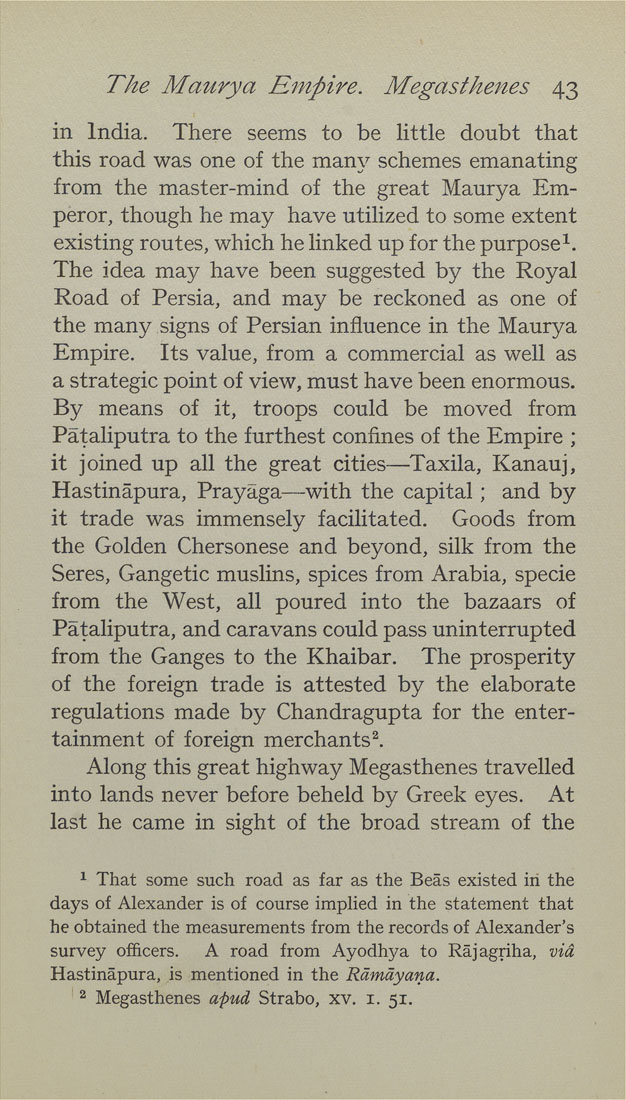The Maurya Empire. Megasthenes 43
in India. There seems to be little doubt that
this road was one of the many schemes emanating
from the master-mind of the great Maurya Em¬
peror, though he may have utilized to some extent
existing routes, which he linked up for the purpose^.
The idea may have been suggested by the Royal
Road of Persia, and may be reckoned as one of
the many signs of Persian influence in the Maurya
Empire. Its value, from a commercial as well as
a strategic point of view, must have been enormous.
By means of it, troops could be moved from
Pataliputra to the furthest confines of the Empire ;
it joined up all the great cities—Taxila, Kanauj,
Hastinapura, Prayaga—with the capital; and by
it trade was immensely facilitated. Goods from
the Golden Chersonese and beyond, silk from the
Seres, Gangetic muslins, spices from Arabia, specie
from the West, all poured into the bazaars of
Pataliputra, and caravans could pass uninterrupted
from the Ganges to the Khaibar. The prosperity
of the foreign trade is attested by the elaborate
regulations made by Chandragupta for the enter¬
tainment of foreign merchants^.
Along this great highway Megasthenes travelled
into lands never before beheld by Greek eyes. At
last he came in sight of the broad stream of the
^ That some such road as far as the Beas existed in the
days of Alexander is of course implied in the statement that
he obtained the measurements from the records of Alexander's
survey officers. A road from Ayodhya to Rajagriha, via
Hastinapura, is mentioned in the Rdmdyana.
2 Megasthenes apud Strabo, xv, i, 51.
|








